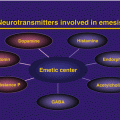Fig. 34.1
Classification system for spinal instability in neoplastic disease
Score | Classification | Action |
|---|---|---|
0–6 | Stable spine | |
7–12 | Indeterminat | Possible impending instability, warrants surgical consultation |
13–18 | Instability | Warrants surgical consultation |
The use of radiotherapy has been shown to reduce back pain and to maintain or restore ambulatory capacity. Radiotherapy-related toxicities such as vomiting, esophagitis, dysphagia, and skin reactions have been reported [27]. According to the evidence evaluated, radiotherapy appears to be effective for the maintenance and restoration of ambulatory function and for back pain relief in MSCC patients. Short-course radiotherapy (including split-course) has the advantage of being faster and less time-consuming for the patient; however, long-course radiotherapy allows for better local control at the site of the spinal cord compression.
Another important factor is the histopathology of the primary tumour can also influence the therapeutic decision. Carcinomas of the prostate, lung and breast good response at RT. The standard radiotherapy is 30 Gy in ten applications, while higher doses were not beneficial [28].
The ground-breaking study by Patchell et al. showed that, compared with patients treated with radiotherapy alone, those treated with direct decompressive surgery and radiotherapy combined had significantly better outcomes in terms of motor capacity, survival, and use of corticosteroids and analgesics. However, that study elicited criticisms from the scientific community (among others) for patient selection bias [29].
It has been shown that, when treated with primary radiotherapy, patients with vertebral instability or vertebral bone fragment experienced less neurologic improvement than did those presenting compression from a soft-tissue mass [30]. Clinical guidelines and expert consensus recommend that patients presenting with unstable spine should be treated with surgery followed by radiotherapy to decompress and stabilize the spine. Surgery followed by radiotherapy seems to be beneficial, especially for patients who are medically operable and have specific characteristics such as being symptomatic, having an expected survival of more than 3 months, and having only one level of spinal cord compression.
That aggressive tumor resection and stabilization followed by RT increases the likelihood of regaining the ability to walk and of maintaining ambulation following treatment compared to those treated with RT alone. Careful selection is required to identify those patients with an adequate life expectancy and good medical status who are candidates for this aggressive approach. Although questions have been raised about the benefit of surgery, until further information is available from prospective randomized trials, suitable carefully selected patients should be offered the option of surgical resection. Surgical decompression is the preferred approach for patients with an unstable spine and for relatively radioresistant tumors that compress the spinal cord.
A clinical challenge in the management of MSCC remains, and that challenge consists in identifying patients who will benefit most from each treatment. The patient’s prognosis must be evaluated, and various classification systems can be used to predict survival. In general, these tools consider the patient’s performance status and primary tumor type, the presence of visceral metastases, and pretreatment ambulatory status.
References
1.
Filis AK, Aghayev KV, Doulgeris JJ (2014) Spinal neoplastic instability: biomechanics and current management options. Cancer Control 21(2):144–150
2.
Devita H (2014) Rosemberg’s cancer: principles & practice of oncology. In: Jr. DeVita VT, Lawewnce TS, Rosemberg, SA (eds) with 404 contributing authors. 10th edn. Chapter 121. LWW, New York
3.
4.
5.
Byrne, Waxman SG (eds) (1990) Spinal cord compression: diagnosis and principles of management. FA Davis Company, Philadelphia, pp 146–176






